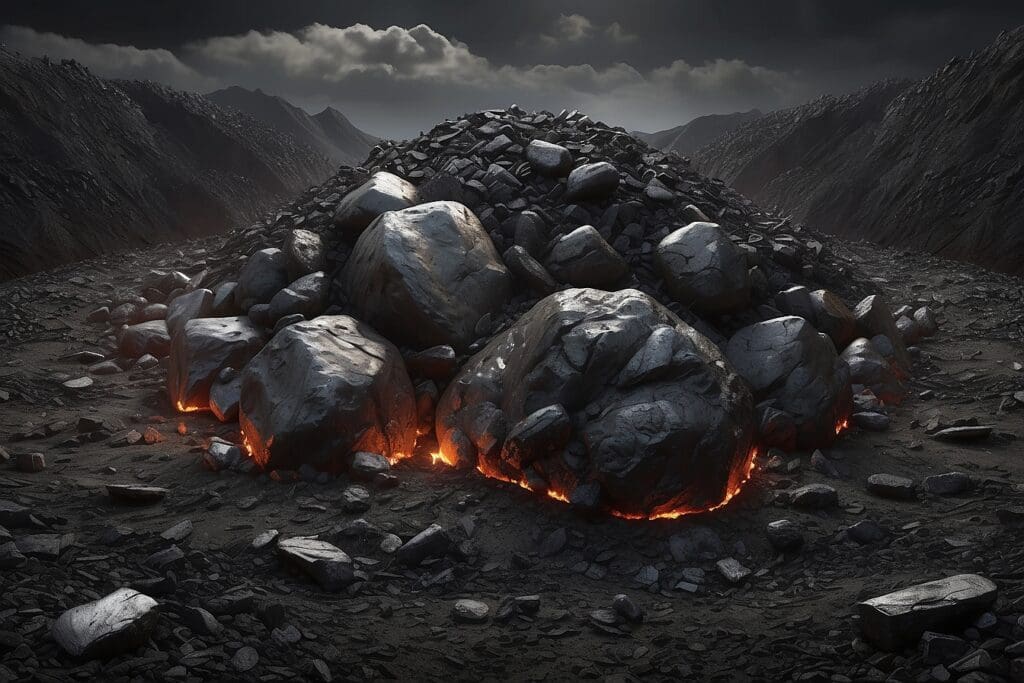Coal-fired power plants in the United States produce more hazardous on human health, including:
- Reduction in life expectancy caused by particulates, sulfur dioxide, ozone, heavy metals, benzene, radionuclides, etc.;
- Hospital admissions for respiratory problems caused by particulates, ozone and sulfur dioxide;
- Black lung caused by coal dust;
- Congestive heart failure caused by particulates and carbon monoxide;
- Cancer, osteoporosis, ataxia and renal dysfunction caused by benzene, radionuclides, heavy metals, etc.; and
- Chronic bronchitis, asthma attacks, etc. caused by particulates and ozone.2
These health effects, combined with emissions—about the same amount as all transportation sources combined.3 While coal is currently the largest energy source in the United States, its dominance has started to drop in recent years.
https://web.archive.org/web/20160404101941if_/http://www.youtube.com/embed/9Wv2GKaukZU i
The amount of energy produced by the coal sector shrunk from 51% of total U.S. energy in 2003 to 42% in 2011, and is projected to be only 35% in 2040.4 Several factors contribute to this decline and to an associated decline in U.S. and prevent new ones from being built. This article helps describe the anti-coal movement and upcoming coal regulations.

Beyond Coal Campaigns
Over the last decade, the Sierra Club’s Beyond Coal Campaign7 has been able to prevent the coal industry from building 166 new coal-fired power plants in the U.S. This high success rate can be attributed to the Club’s grassroots approach. The campaign’s director Mary Anne Hitt has explained that “places like Oklahoma and South Dakota, [are] not the usual liberal bastions where you’d expect environmental victories.” But the movement gained momentum when “friends and neighbors started to spread the word, pestering local media, packing regulatory hearings, protesting before state legislatures, filing legal challenges, and more.”
The next stage in the Beyond Coal Campaign will be to move from preventing the construction of new plants to shutting down old plants. Utilizing a $150 million budget—with $50 million already pledged from New York City mayor Michael Bloomberg—10 the Campaign hopes to shut down one third of the country’s older plants by 2020, and all of them (about 400) by 2030.11 In 2012, the Sierra Club chapter of Illinois helped to jumpstart the new mission by shutting down Chicago’s two remaining coal power plants.12 The Campaign is now beginning to focus attention on three plants in Texas that account for about 8% of the state’s power capacity. The Sierra Club has two coal-related lawsuits pending against Texas coal companies and has issued two more notices of intent to sue for violations of .15
EPA Regulations
In 2012 the U.S. Environmental Protection Agency (EPA) took some first steps towards regulating coal-fired power plant emissions with the Proposed Carbon Pollution Standard for New Power Plants under Section 111 of the Clean Air Act. The standard requires that any new power plant in the United States with a capacity greater than 25 megawatt electric (MWe) built can emit no more than 1,000 pounds of carbon dioxide per megawatt-hour (lb CO2/MWh).16 The new rule effectively means that any new coal plant must be built with advanced carbon capture technology.
For already existing power plants, the most important standard on the books today is the Mercury and Air Toxics Standard, which requires coal-fired power plants to have flue gas desulfurization equipment (scrubbers) or dry sorbent injection systems installed by 2016. Additional regulations are expected over the next few years. In a memo to the Environmental Protection Agency a few weeks ago, President Obama called for the EPA to issue proposed standards for modified, reconstructed, and existing power plants no later than June 1, 2014.17
Coal-fired power plants are not going to disappear overnight—it isn’t possible to suddenly shut off 1/3 of America’s power supply. However, coal plants are beginning to fall out of favor. Fewer and fewer new plants are being built, and new regulations for existing plants may just be the last nail in the coffin.


